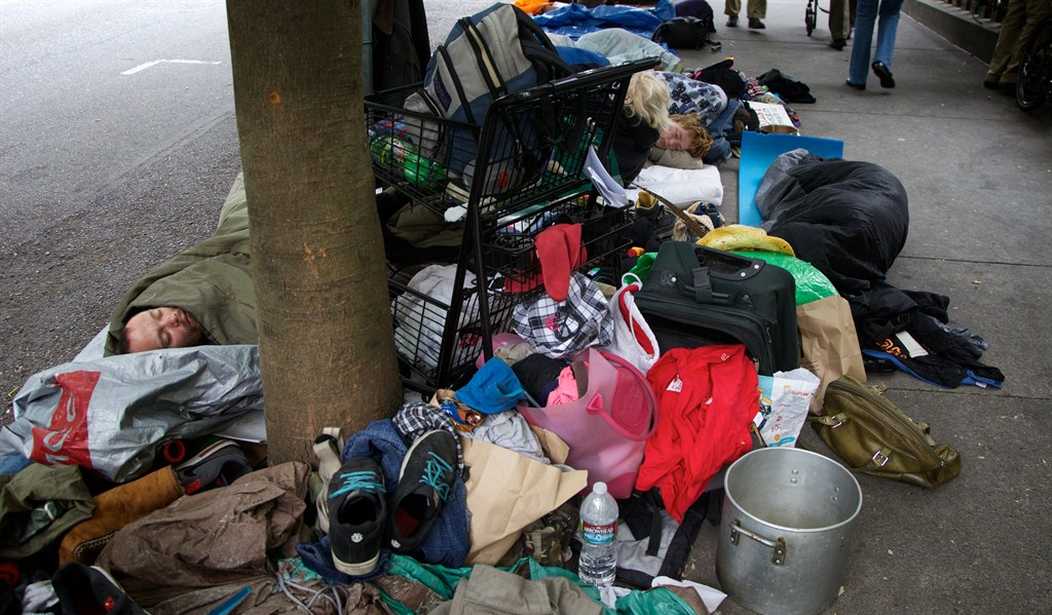Last week, the Cato Institute released a new study,The Work vs. Welfare Trade-Off, 2013: An Analysis of the Total Level of Welfare Benefits by State. It showed that a family collecting welfare benefits from seven common programs – Temprary assistance for Needy Families (TANF), food stamps, Medicaid, WIC, public housing assistance, utilities assistance (LIHEAP) and free commodities – could receive more than what a minimum wage job would pay in 35 states, more than a $15 per hour job in 13 states, and more than a $20 per hour job in the eight most generous states. We concluded that the high value of welfare benefits might create a disincentive for recipients to leave welfare for work.
Unsurprisingly, our study has attracted criticism from several quarters. Some of those critics make valuable points that might improve future research, but most criticism falls far short of the mark.
Among the most frequent criticisms:
SNAP should be the basis of the package instead of TANF
Some of our critics have essentially attempted to redefine “welfare” to mean a program other than TANF. Our analysis started with a family on TANF and then looked at what additional programs the family would receive. By starting with a much larger program, such as food stamps (SNAP), our critics are able to – correctly – argue that relatively few SNAP recipients also receive TANF benefits.
However, while SNAP has indeed grown in size and significance in recent years, TANF should continue to be the basis for determining welfare packages. TANF, and traditional cash assistance, have long been considered the quintessential “welfare” program, and its importance can be seen in legislative history. For example, it was the foundation and focus of the 1996 reforms that are cited as “welfare reform.” TANF is also more tightly targeted at the population we attempt to analyze in this paper; as is often cited, SNAP, in addition to serving low-income non-working families, also serves significant numbers of elderly and disabled people, as well as a higher proportion of working families. For instance, in 2011 almost 17 percent of SNAP households were above the federal poverty guidelines (FPL).
Recommended
Single adults receive less/this hypothetical family is not representative
It is certainly true that a single adult would receive less than a family, due to the very nature of the welfare programs, but we feel our hypothetical family is more representative. The average household size for TANF in the most recent available data was exactly 3.0 people, while at the same time only six percent of TANF households were only one person. Looking at SNAP, a significant proportion of those single-person recipient households were either disabled or elderly, so a single, nondisabled, working age adult is not representative of that population either. In a larger sense, the majority of the expenditures for these programs are not on these childless adults, so the focus should remain on households with dependent children.
Not everyone receives all the benefits from these programs
Another critique notes that not everyone on welfare receives benefits from all seven of the programs that we included. Therefore, it is said, our study inflated the total amount of benefits.
We agree that not every family on welfare receives all benefits. In fact, the study specifically says, “Not every welfare recipient fits the profile used in this study, and many who do fit it do not receive every benefit listed.” It even included a chart (Figure 16) showing the value of a smaller package of benefits.
Still, over 82 percent of TANF families receive food stamps, and almost all of them receive medical assistance. Approximately 61 percent of all Needy Families fitting our profile also receive aid from the Women, Infants and Children program, or WIC, so we included that benefit. (If the children were older, they would not be eligible for WIC but would receive other benefits such as subsidized school lunches and breakfasts.) We also included utilities assistance, given that half of welfare recipients are on that program.
As we acknowledge in the paper, housing was one of the more difficult programs to decide on, since the rate of participation varies from nearly 82 percent of welfare families in North Dakota to virtually none in Idaho. In the end, we excluded housing benefits in any state with less than 10 percent of TANF households participating. Others might choose a different threshold, but it is important to note that in many of the states with the most generous welfare package, such as New York, Rhode Island, New Jersey, Massachusetts and Washington D.C., the participation rate is higher than twenty percent. In Massachusetts almost half of TANF families receive housing assistance.
While some states have taken significant steps to decrease the role of housing assistance in their welfare programs, it remains a significant factor nationwide, especially in the most generous states.
In the paper, we acknowledge that there might still be differences of opinion regarding some of these programs, so in addition to our full benefit package, we included a calculation of a smaller, basic package consisting only of TANF, SNAP and Medicaid; even in this basic package, welfare pays more than minimum wage in the eight most generous states.
People continue to get benefits even when they enter the workforce
Many critics pointed out that many families that leave welfare for work continue to receive some welfare benefits even if the mother were to enter the workforce. Therefore, they say, it is unfair to compare work without benefits to welfare.
This is a valid point and our paper discusses the issue at length. We note:
We also acknowledge that moving from welfare to work does not automatically mean that an individual loses all welfare benefits. In those states where the wage equivalent of welfare remains relatively low, an individual taking a job at that wage could still retain eligibility for some benefits.
Continuation of benefits varies considerably from state to state and was time-limited for many programs. However, it is generally agreed, regardless of eligibility, actual participation rates for all programs drop once an individual enters the workforce. In part, this may be because an individual often must re-apply for benefits. Secondly, available funding for programs such as WIC, utilities assistance, and free commodities are prioritized on the basis of need. Therefore, benefits may not be available for an individual who remains technically eligible.
In addition, any additional benefits are likely to be at least partially offset by additional costs associated with going to work, such as child care, transportation, and clothing. Finally, it should be noted that, even if the final income level remains unchanged, an individual moving from welfare to work will perceive some form of loss–a reduction in leisure as opposed to work. As the Congressional Research Service has pointed out:
Leisure is believed to be a “normal good.” That is, with a rise in income, people will “purchase” more leisure by reducing their work effort….Thus, the increase in [the value of welfare benefits] is expected to cause people to reduce work hours.
Moreover, this study is not designed to determine whether it is better to both work and receive welfare. That would almost certainly be the case at any income level. Rather, this study simply asks whether an individual would be better off if he or she was self-supporting through work or dependent on the state through welfare.
A study that examines the impact of phasing-out various benefits as former recipients earn additional income might indeed be valuable in the future. But that doesn’t change the conclusions from this study.
Including the value of Medicaid
Some have criticized our study for including Medicaid as one of the benefits included in our welfare package. These critics argue that 1) Medicaid spending does not accurately reflect the value of the benefit to the recipient, 2) working individuals don’t consider health insurance to be part of their wages, and 3) in a contradiction to point 2), we should have included health insurance in the computation of welfare-equivalent wages.
We decided to include the value of Medicaid because absent this benefit, our family would have to purchase an equivalent insurance policy to provide healthcare. In determining the value of Medicaid to our hypothetical welfare family, we agreed that it would not be fair to simply equate total value for the recipient family to the total Medicaid expenditure, because this benefit is not actually paid to the family; it is instead provided directly to the health care providers.
In an attempt to account for this wedge between services provided and the value to the family, we set the Medicaid benefit for our package as the minimum between the Medicaid expenditure and the premium cost for an insurance policy in the individual market that provides equivalent benefits. In 21 states, the Medicaid expenditure for our family exceeds that equivalent insurance premium, but we used the lesser of the two values in every case.
Second, the sort of low-wage entry-level jobs that most welfare recipients can expect to take initially are not likely to offer health insurance.
The third criticism has more validity. It might have been clearer if we had used the term “equivalent compensation” instead of “equivalent wage.” In the “work scenario,” in some cases the employer might have offered employer sponsored health insurance, and reduced wages by a commensurate amount. The term “equivalent compensation” might have more accurately conveyed this possibility. Still, this does not change our fundamental conclusion.
We appreciate the amount of discussion that our study has generated. Any study can be improved by well-intentioned review and criticism. Some of those attacking our paper appear not to have actually read it. Others simply disagree with us. A few criticisms raise valid points and should be considered in subsequent iterations of this report. In general, however, we believe that the most common criticisms ofThe Work vs. Welfare Trade-Off, 2013,are unconvincing. We stand by our report and its conclusions.

























Join the conversation as a VIP Member